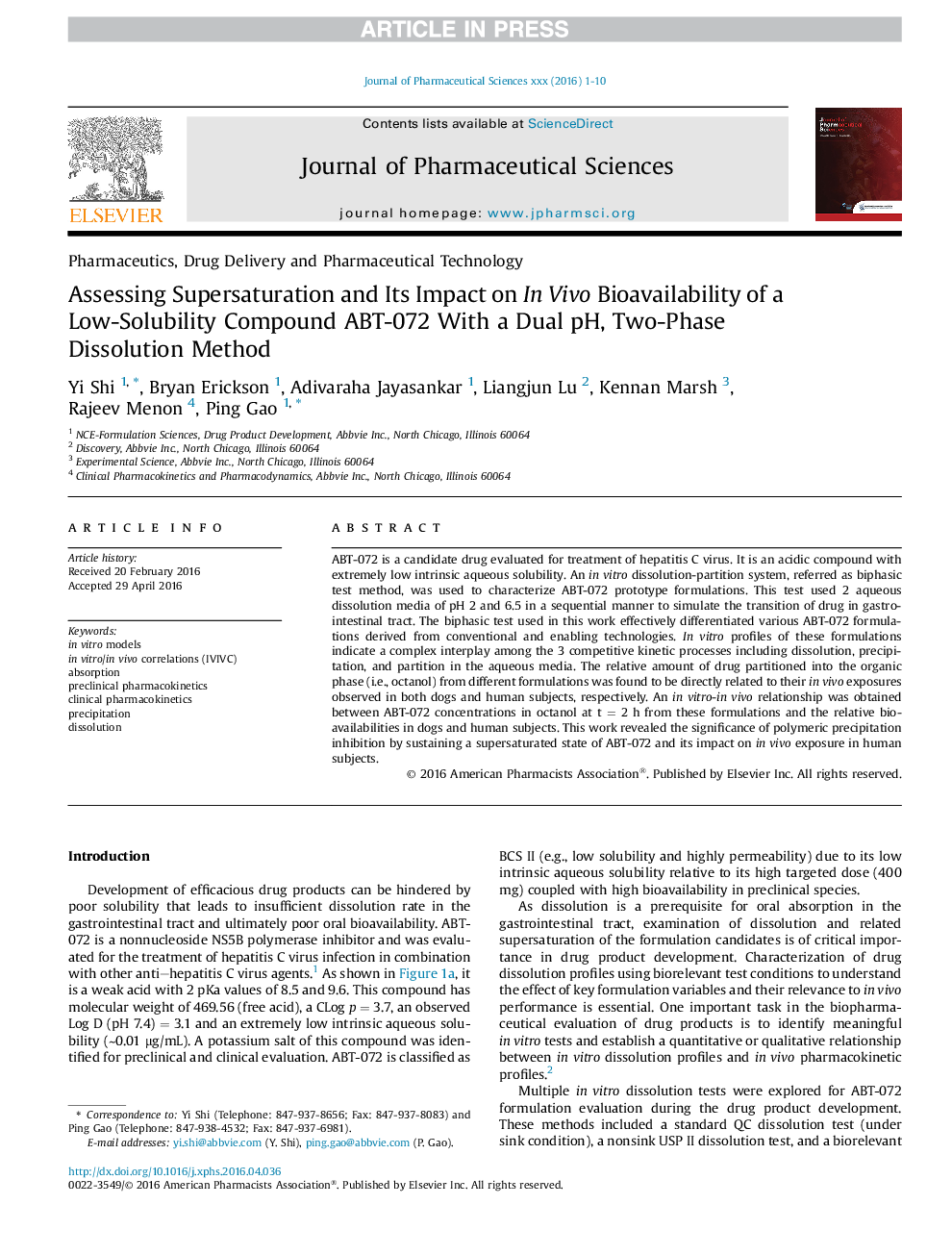| Article ID | Journal | Published Year | Pages | File Type |
|---|---|---|---|---|
| 8515022 | Journal of Pharmaceutical Sciences | 2016 | 10 Pages |
Abstract
ABT-072 is a candidate drug evaluated for treatment of hepatitis C virus. It is an acidic compound with extremely low intrinsic aqueous solubility. An in vitro dissolution-partition system, referred as biphasic test method, was used to characterize ABT-072 prototype formulations. This test used 2 aqueous dissolution media of pH 2 and 6.5 in a sequential manner to simulate the transition of drug in gastrointestinal tract. The biphasic test used in this work effectively differentiated various ABT-072 formulations derived from conventional and enabling technologies. In vitro profiles of these formulations indicate a complex interplay among the 3 competitive kinetic processes including dissolution, precipitation, and partition in the aqueous media. The relative amount of drug partitioned into the organic phase (i.e., octanol) from different formulations was found to be directly related to their in vivo exposures observed in both dogs and human subjects, respectively. An in vitro-in vivo relationship was obtained between ABT-072 concentrations in octanol at t = 2 h from these formulations and the relative bioavailabilities in dogs and human subjects. This work revealed the significance of polymeric precipitation inhibition by sustaining a supersaturated state of ABT-072 and its impact on in vivo exposure in human subjects.
Keywords
Related Topics
Health Sciences
Pharmacology, Toxicology and Pharmaceutical Science
Drug Discovery
Authors
Yi Shi, Bryan Erickson, Adivaraha Jayasankar, Liangjun Lu, Kennan Marsh, Rajeev Menon, Ping Gao,
